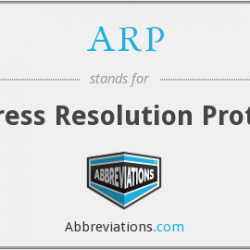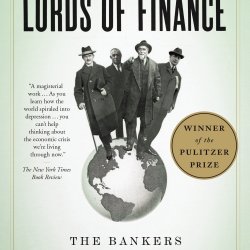the ultimate guide to how does the federal government finance a budget deficit

With this boost in danger, the discount rate can now be risk-adjusted accordingly. This chart highlights the devaluation of capital over time as a result of various discount rate rates. The other essential input variable for determining NPV is the discount rate. There are lots of techniques for determining the suitable discount rate. Because many individuals believe that it is suitable to use greater discount rate rates to change for risk or other factors, they may choose to utilize a variable discount rate. Reinvestment rate can be specified as the rate of return for the firm's investments typically, which can likewise be used as the discount rate.
The interest rate, in this context, is more commonly called the discount rate. The discount rate represents some expense (or group of costs) to the investor or financial institution. All of these expenses combine to determine the rate of interest on an account, which rate of interest in turn is the rate at which the sum is marked down. If FV and n are held as constants, then as the discount rate (i) boosts, PV decreases. To identify the present worth, you would require to discount it by some rate of interest (i). The rate that member banks charge each other is the federal funds rate and the rate the Fed charges is described as the discount rate.
The discount rate is the rate that the central bank real controls. That is the rate banks charge each other, and is affected by the discount rate. In this manner, the discount rate in tandem with the fed funds target rate are part of an expansionary policy system. The value of a bond is gotten the fountains resort orlando timeshare promotion by marking down the bond's expected cash flows to the present utilizing a suitable discount rate. Therefore, the worth of a bond is acquired by marking down the bond's anticipated money flows to today utilizing an appropriate discount rate. In practice, this discount rate is typically figured out by recommendation to comparable instruments, supplied that such instruments exist.
The Ultimate Guide To How To Cite Yahoo Finance Apa
Today worth of an annuity is the worth of a stream of payments, discounted by the rates of interest to account for the payments being made at different moments in the future. The $1,000 distinction shows the rate of interest the Fed charges for the loan, called the discount rate. The Fed might utilize the discount rate for expansionary financial policy. For example, the Fed raises the discount rate. For instance, the Fed raises the discount rate. The Federal Reserve uses the discount rate to decrease money supply They can get hair shampoos and other hair items at a less expensive rate and sell them to consumers at full rates.
Another challenge is diverting, which is when companies offer to carry members at a cheaper rate instead of pass on savings to customers. A trade rate discount is offered by a seller to a buyer for functions of trade or reselling, instead of to an end user. They can get hair shampoos and other hair items at a more affordable rate and sell them to customers at complete prices. Assume a business sells a ten years, $100,000 bond with an efficient annual interest rate of 6% for $90,000. The journal entry for that transaction would be as follows: Money $90,000 Discount $10,000 Bond Payable $100,000 The interest cost each duration is $6,000, and the amortization rate on the bond payable equals $1,000 ($ 100,000/ 10 years).
Typically, the amortization rate is determined by dividing the discount by the variety of periods the business needs to pay interest. That suggests that the amortization rate on the bond payable equal $1,000 ($ 100,000/ 10 years).

How How To Finance A Car Through A Bank can Save You Time, Stress, and Money.
This website or its third-party tools use cookies, which are necessary to its functioning and needed to accomplish the functions highlighted in the cookie policy. By closing this banner, scrolling this page, clicking a link or continuing to browse otherwise, you agree to our Personal privacy Policy.
A couple of weeks ago, I remained in a meeting with about 15 wise property and finance people, a number of whom have Ivy League MBA's (How to finance a house flip). We spent about 20 minutes going over and discussing using Discount rate Rates in evaluating property investments. Because there was some confusion amongst the group about how to pick a proper discount rate, I've decided to write a post about it. Here goes. In business genuine estate, the discount rate is utilized in discounted capital analysis to compute a net present worth. The discount rate is defined below: The discount rate is utilized in reduced cash flow analysis to compute today value of future capital.

There is not a one-size-fits-all technique to determining the suitable discount rate. That is why our conference went from a conversation to a lively argument. Nevertheless, a general general rule for selecting a suitable discount rate is the following: * WACC is specified as the weighted average of all capital sources used to finance an investment (i. e. debt & equity sources). Utilizing this approach, financiers are able to make sure that their initial financial investment in the possession achieves their return goals. Now that we have definitions and fundamentals out of the method, lets dive into how discount rates are figured out in practice and in theory.
What Can The Federal Government Do To Finance A Deficit? Can Be Fun For Anyone
It can be considered the opportunity expense of making the financial investment. The opportunity expense, would be the expense related to the next best investment. Simply put, the discount rate must equal the level of return that similar supported financial investments are currently yielding. If we understand that the cash-on-cash return for the next best investment (opportunity expense) is 8%, then we ought to use a discount rate of 8%. Trade credit may be used to finance a major part of a firm's working capital when. A discount rate is a representation of your level of confidence that future income streams will equal what you are forecasting today. In other words, it is a step of threat.
For that reason, we must mark down future cashflows by a greater portion due to the fact that they are less most likely to be realized. Alternatively, if the investment is less risky, then in theory, the discount rate should be lower on the discount rate spectrum. For that reason, the discount rate utilized when examining a stabilized class A house complex will be lower than the discount rate used when analyzing a ground-up shopping center development in a View website tertiary market. The higher the Discount Rate, the greater the perceived threat The lower the Discount Rate, the smaller the viewed risk Keep in mind that the level of danger is a function of both the asset-level danger as well as business strategy risk.





Ingen kommentarer endnu